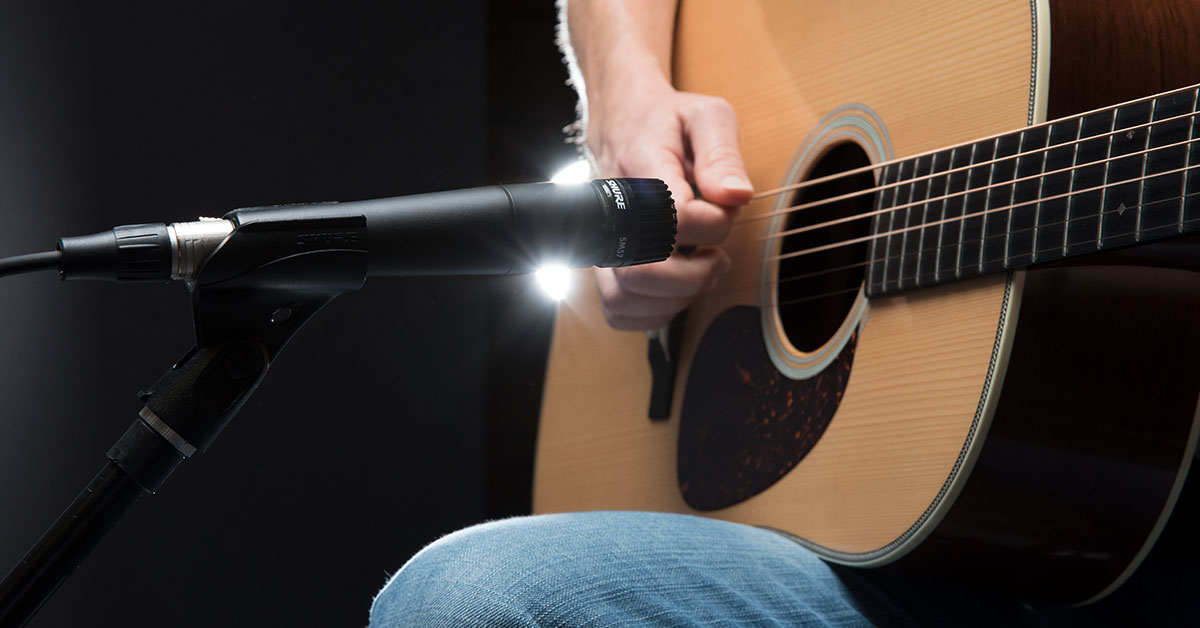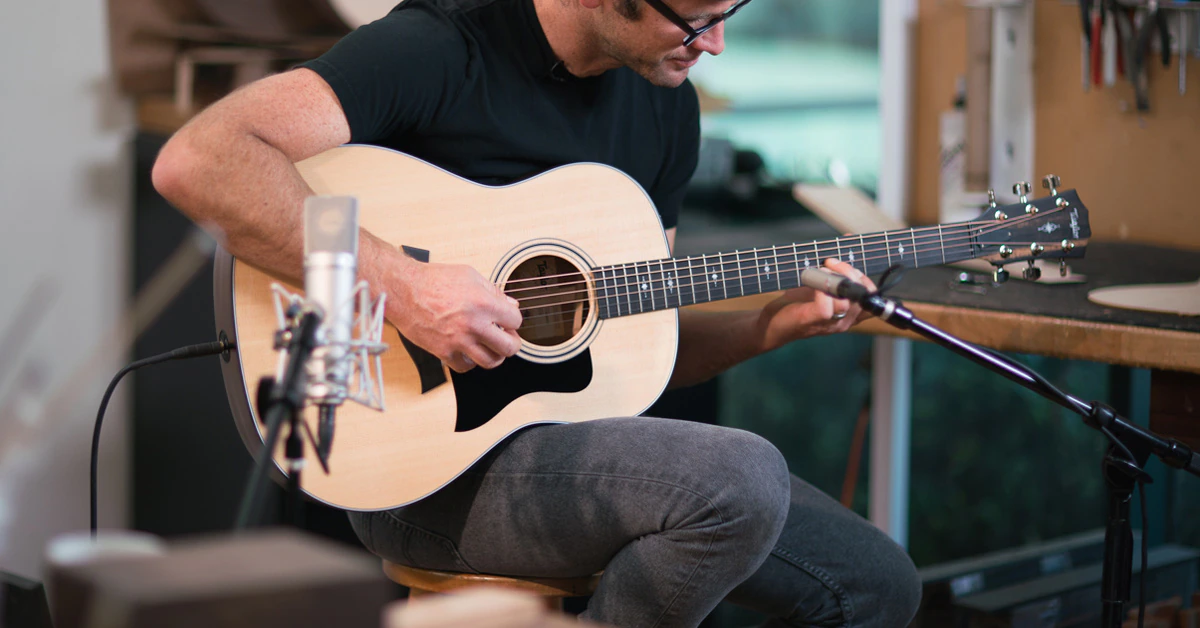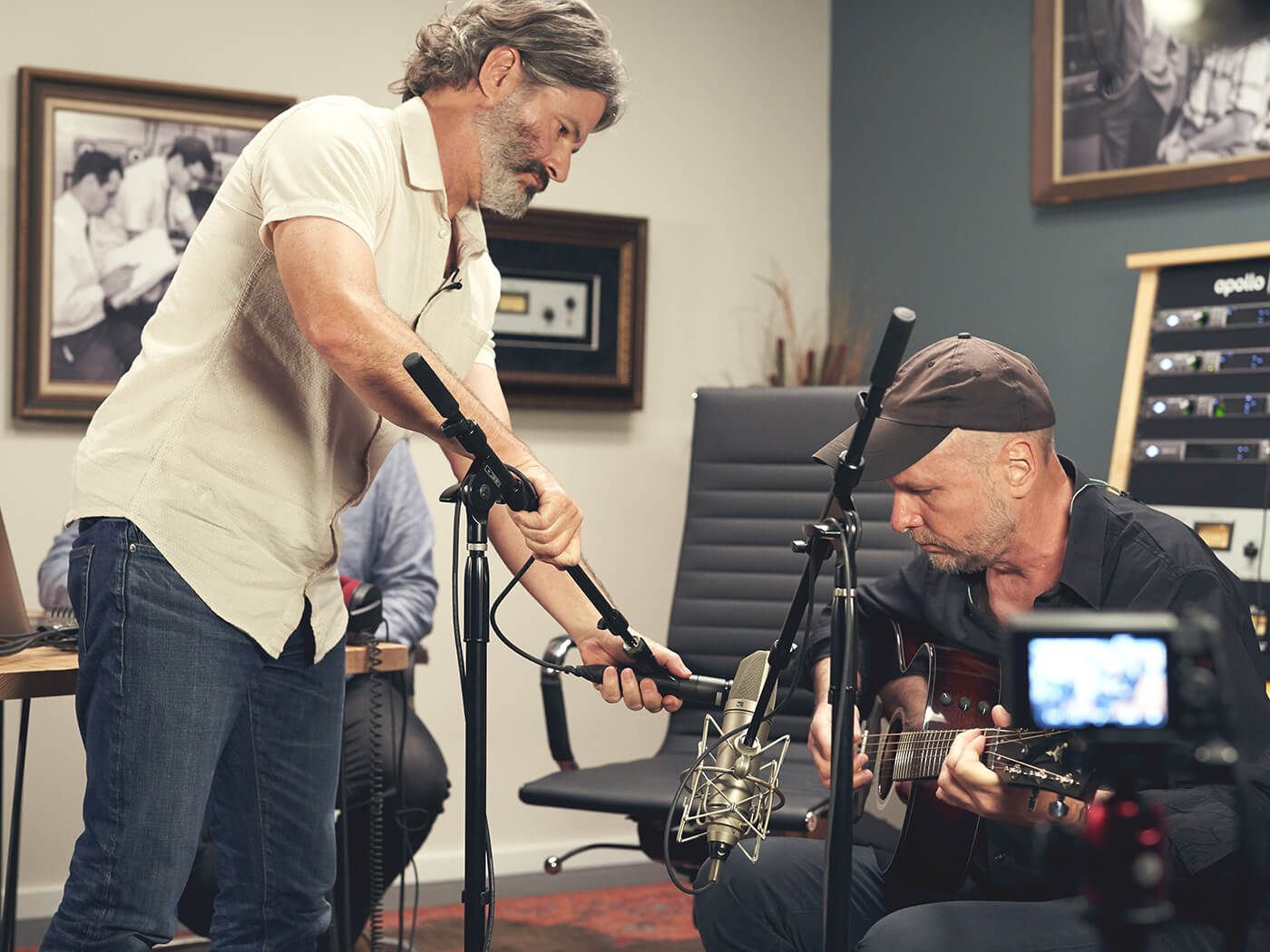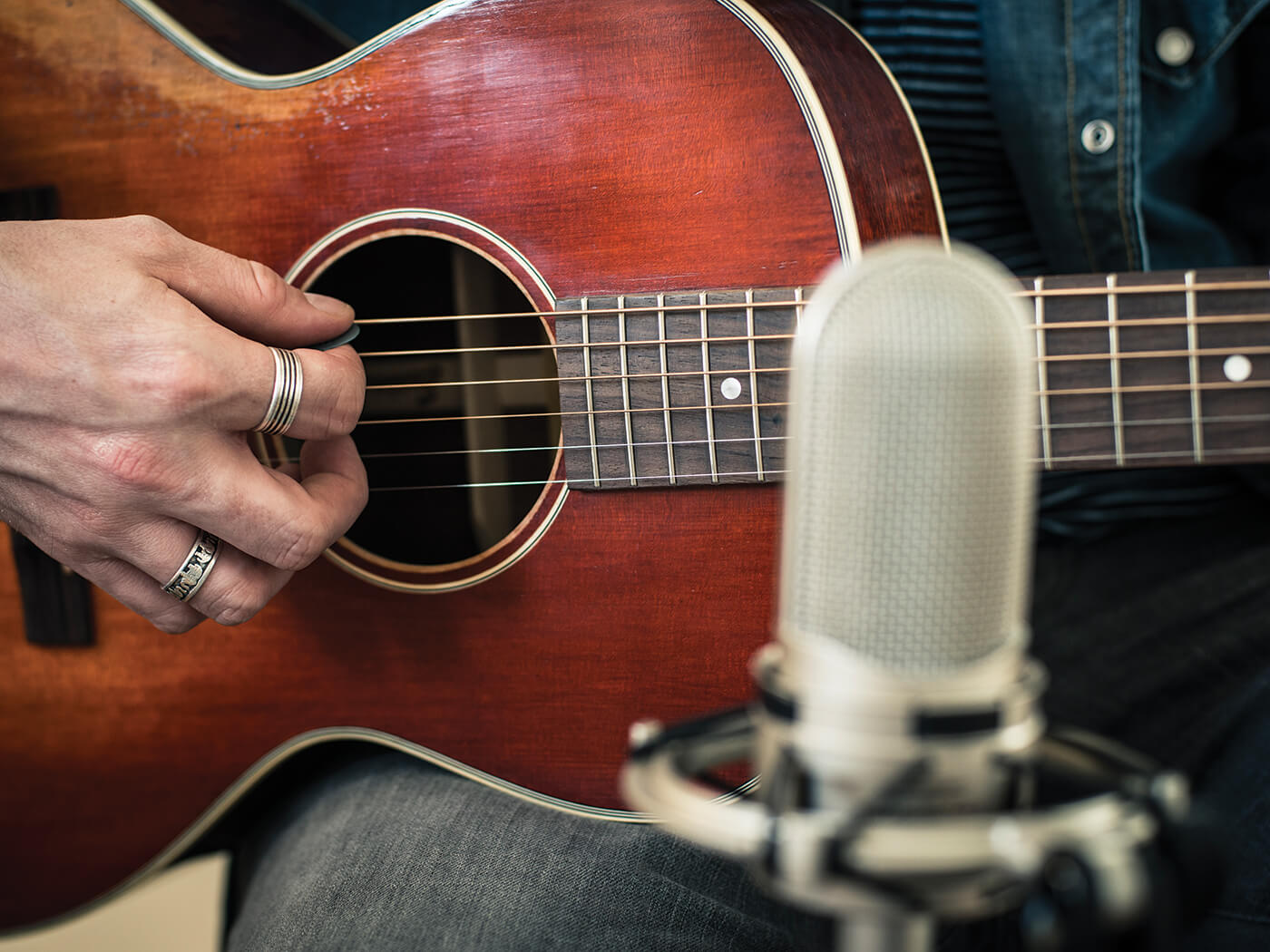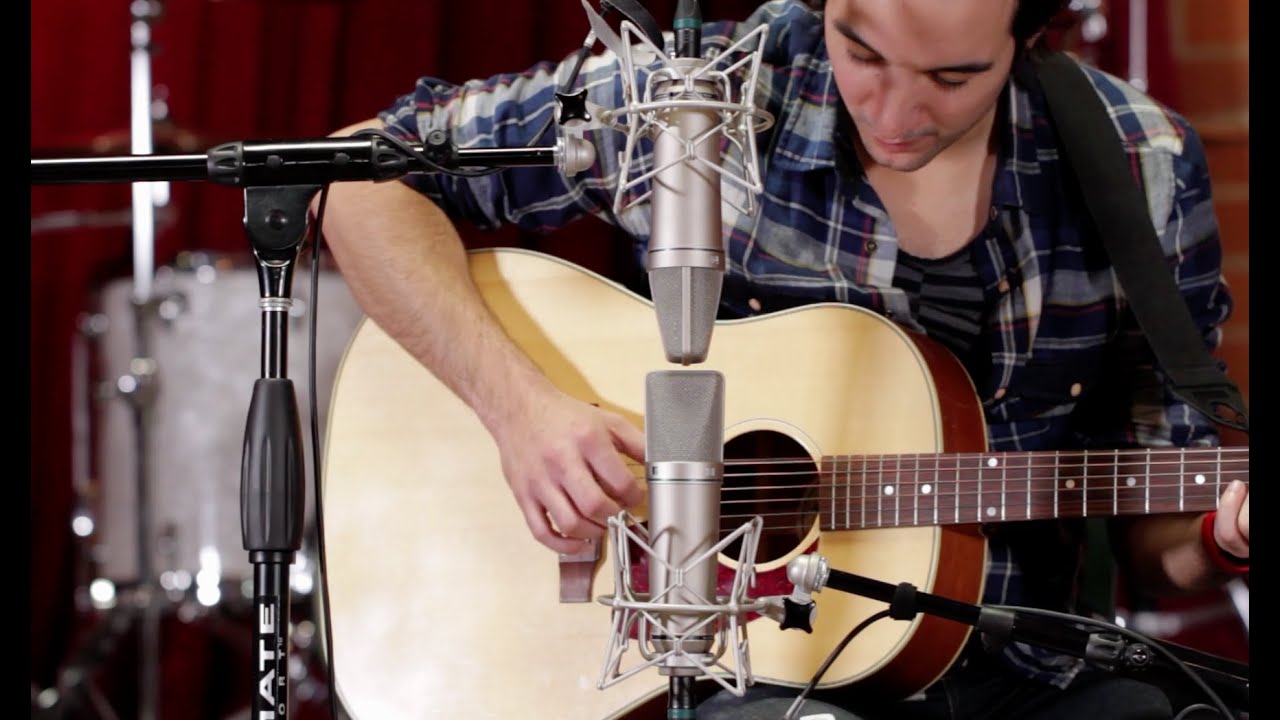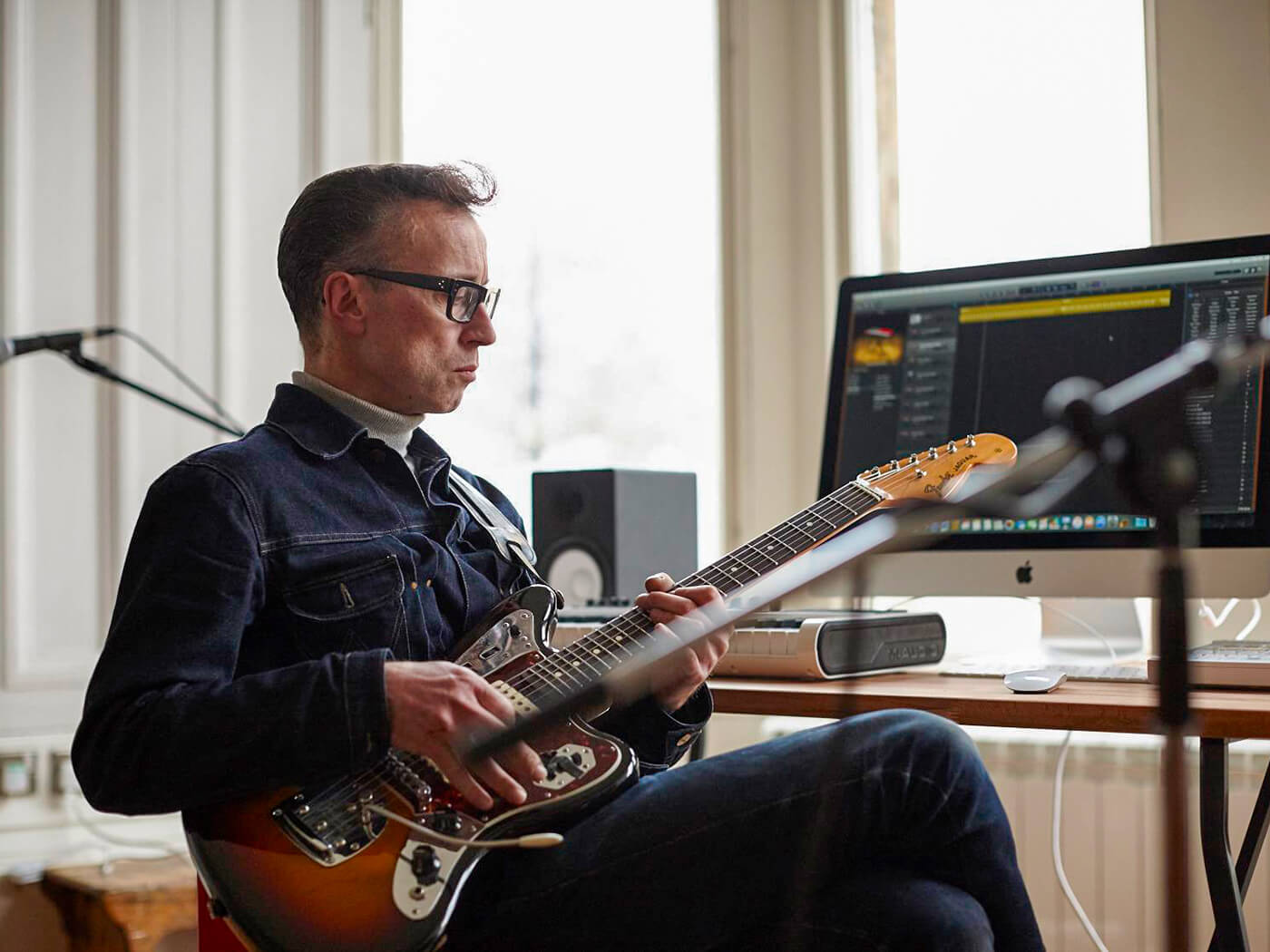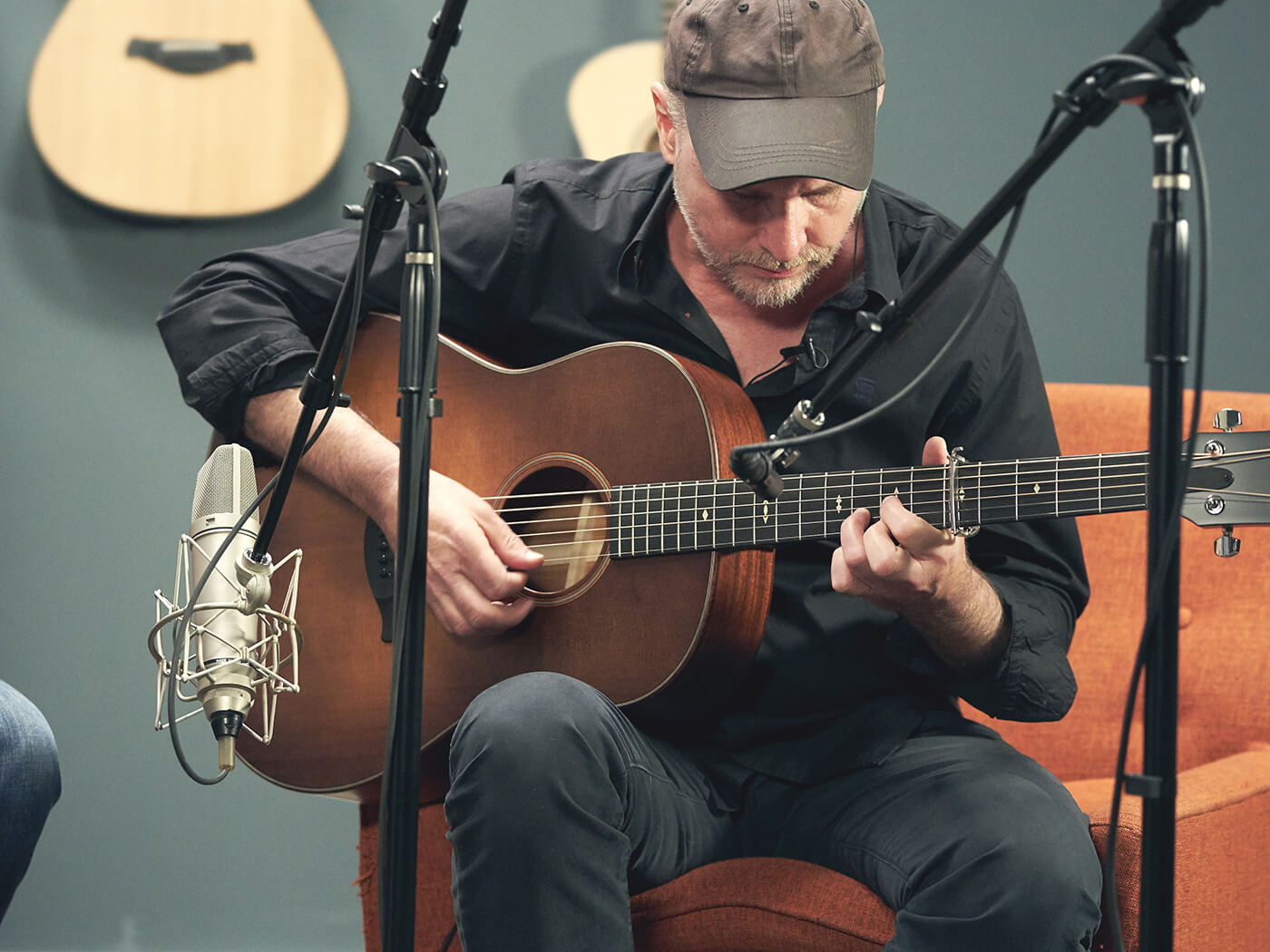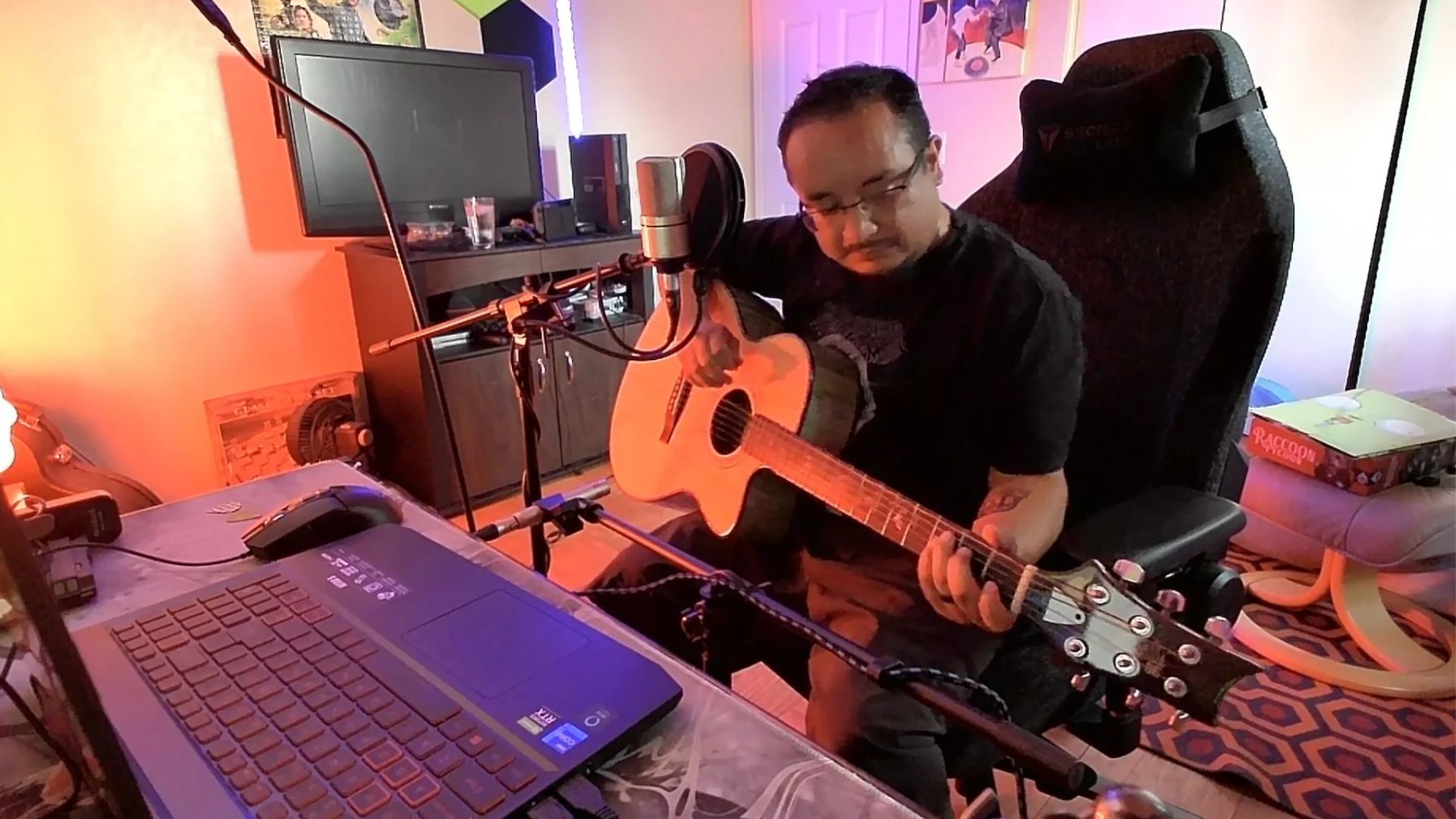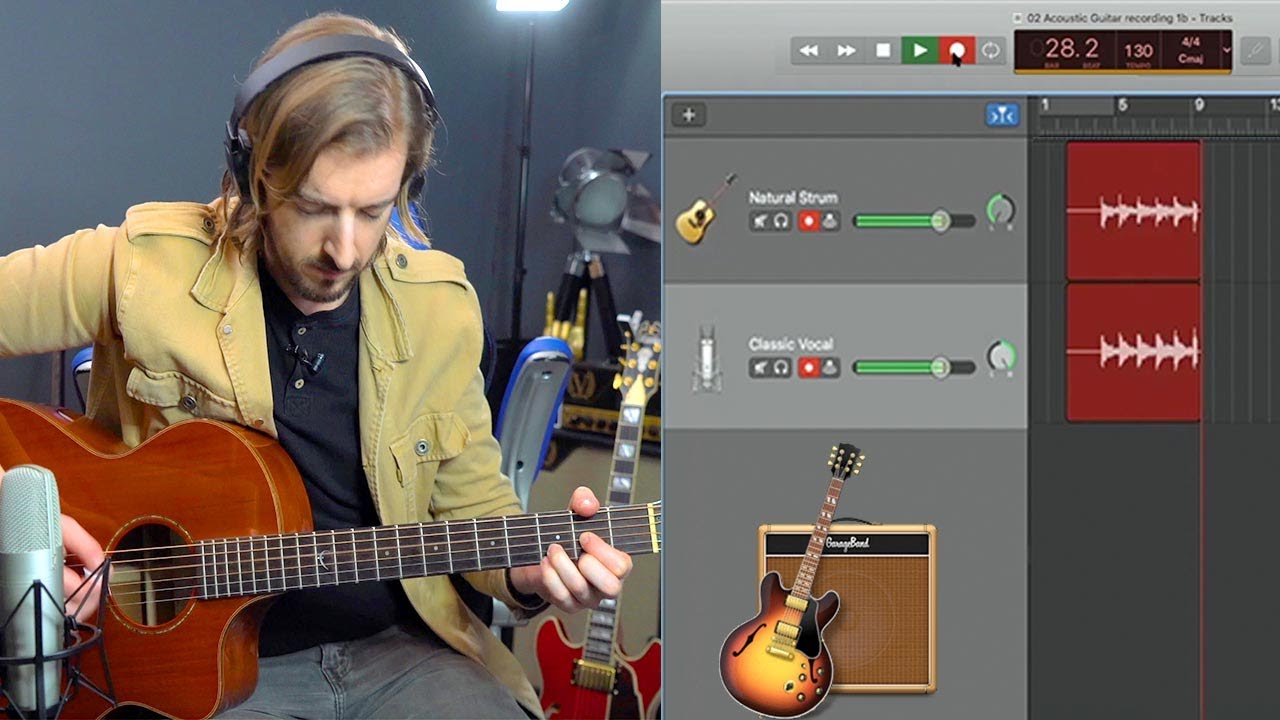Introduction
When it comes to capturing the beautiful and intricate sound of an acoustic guitar, choosing the right microphone is crucial. The right mic can make all the difference in bringing out the nuances and tonal qualities of the instrument, while the wrong mic can leave your recordings sounding muddy or lacking in clarity.
There are several important factors to consider when choosing a mic for recording acoustic guitar. Factors such as sound quality, frequency response, polar pattern, and price range all play a role in finding the perfect match for your needs. Additionally, understanding the different types of microphones available can help you make an informed decision.
In this article, we will explore the different types of microphones that are suitable for recording acoustic guitar and discuss their strengths and weaknesses. Whether you’re a beginner setting up your first home studio or a seasoned musician looking to upgrade your gear, this guide will help you navigate the world of microphones and find the best option for your recording needs.
It’s worth noting that there isn’t a one-size-fits-all answer when it comes to choosing a mic for recording acoustic guitar. Each microphone has its own unique characteristics and sonic qualities, and the right choice ultimately depends on your personal preferences and the specific sound you’re trying to achieve.
Now, let’s dive into the factors you should consider when selecting a microphone for recording acoustic guitar, and explore the different types of microphones available in the market.
Factors to Consider When Choosing a Mic for Recording Acoustic Guitar
When selecting a microphone for recording acoustic guitar, there are several important factors to keep in mind. These factors will help guide you in finding a mic that suits your specific needs and captures the unique qualities of your instrument.
1. Sound Quality: The most crucial factor when choosing a microphone is its sound quality. A good microphone should accurately capture the natural timbre and resonance of the acoustic guitar. Look for a mic that reproduces the instrument’s rich midrange, clear highs, and balanced lows.
2. Frequency Response: The frequency response of a microphone refers to its ability to capture different frequencies across the audible spectrum. For acoustic guitars, a mic with a wide and balanced frequency response is ideal as it can capture the full range of the instrument’s tones.
3. Polar Pattern: The polar pattern determines how a microphone picks up sound from various directions. For recording acoustic guitar, a microphone with a cardioid polar pattern is commonly used. This pattern captures sound from the front while minimizing background noise and unwanted sound reflections.
4. Price Range: The budget you have allocated for a microphone is an important consideration. There are excellent options available at different price points, so it’s essential to set a realistic budget and research mics within that range.
5. Instrument Placement: Consider how you prefer to position the microphone in relation to your acoustic guitar. Different mic placements, such as near the soundhole, above the 12th fret, or a combination of positions, can yield different tonal characteristics. Some microphones are better suited for specific placements, so keep this in mind when choosing a mic.
6. Recording Environment: The environment in which you’ll be recording is another factor to consider. If you’re recording in a treated studio with low ambient noise, a sensitive condenser microphone may be suitable. However, if you’re in a noisy or untreated room, a dynamic microphone can help mitigate unwanted background noise.
Remember, there is no one-size-fits-all solution when it comes to microphone selection for recording acoustic guitar. Each factor should be considered in relation to your specific recording goals and the unique characteristics of your instrument.
Now that we’ve explored the essential factors to consider, let’s take a closer look at the different types of microphones available for recording acoustic guitar.
Types of Microphones for Recording Acoustic Guitar
There are several types of microphones available for recording acoustic guitar, each with its own characteristics and strengths. Understanding the differences between these microphone types will help you make an informed decision when choosing the right mic for your needs.
1. Condenser Microphones: Condenser microphones are widely used in recording studios due to their excellent sensitivity and accuracy. They capture the subtle nuances and details of the acoustic guitar’s sound. Condensers require phantom power, which can be supplied by an audio interface or mixer. They are often preferred for capturing the natural timbre and intricate harmonics of the instrument.
2. Dynamic Microphones: Dynamic microphones are rugged and versatile, making them a popular choice for live performances and on-stage recording. They can handle high sound pressure levels and are less sensitive to ambient noise, making them suitable for noisy environments. While they may not capture the subtle nuances of the acoustic guitar as well as condenser mics, they can provide a warm and punchy sound.
3. Ribbon Microphones: Ribbon microphones are known for their smooth and vintage sound. They have a unique tonal character that adds warmth and richness to acoustic guitar recordings. Ribbon mics are delicate and require careful handling, but they can deliver a natural and vintage-like sound that many musicians love.
4. Stereo and Dual-Element Microphones: Stereo and dual-element microphones use two microphone capsules to capture the sound from different angles. These mics can create a wider and more immersive stereo image, making them ideal for capturing the spatial characteristics of the acoustic guitar and the room ambience.
It’s important to experiment with different microphone types and find the one that best suits your desired sound. Consider the genre of music you’ll be recording, the specific tonal qualities you want to capture, and the environment in which you’ll be recording.
Now that you have an understanding of the different types of microphones for recording acoustic guitar, let’s explore some of the best mics available in each category.
Condenser Microphones
Condenser microphones are highly regarded in the world of audio recording for their ability to capture detailed and transparent sound. They are commonly used when recording acoustic guitar due to their ability to capture the instrument’s intricacies and tonal nuances.
One of the main advantages of condenser microphones is their sensitivity, which allows them to capture the subtlest details of the acoustic guitar’s sound. They have a wide frequency response range, typically ranging from 20Hz to 20kHz, ensuring that they can accurately capture the full spectrum of the instrument’s tones and harmonics.
Condenser mics require external power to operate, usually in the form of 48-volt phantom power provided by an audio interface or mixer. This power activates the built-in preamp and polarizing voltage needed for the microphone to work optimally. The availability of phantom power is an essential consideration when using a condenser microphone.
There are two types of condenser microphones: large-diaphragm and small-diaphragm. Large-diaphragm condenser microphones are known for their warmth and natural sound reproduction, making them a popular choice for acoustic guitar recording. Small-diaphragm condenser microphones, on the other hand, excel at capturing fast transients and high-frequency detail, making them suitable for capturing the attack and brightness of an acoustic guitar.
Some popular condenser microphones for recording acoustic guitar include:
- Neumann U87: This legendary microphone is highly revered for its transparent and detailed sound. It captures the natural tones of the acoustic guitar with exceptional clarity.
- AKG C414: The AKG C414 is a versatile and highly regarded condenser microphone with multiple polar patterns. It allows for flexibility in capturing various acoustic guitar recording techniques.
- Audio-Technica AT2020: Offering excellent value for the price, the AT2020 delivers a balanced and detailed sound, making it a popular choice for home studios and budget-conscious musicians.
Remember, the choice of condenser microphone will depend on your specific recording needs, budget, and desired sound. It’s important to experiment with different models and consider how they complement the unique characteristics of your acoustic guitar.
Now that we’ve covered condenser microphones, let’s explore the next category: dynamic microphones.
Dynamic Microphones
Dynamic microphones are known for their durability and versatility, making them a popular choice for live performances and on-stage recording. While they may not capture all the intricate details of acoustic guitar like condenser microphones, they have their own unique qualities that can enhance the sound.
One of the main advantages of dynamic microphones is their ability to handle high sound pressure levels without distortion. This makes them ideal for recording in louder environments or when the acoustic guitar is played with more intensity. Dynamic mics can handle the powerful strums and percussive elements of the instrument, providing a warm and punchy sound.
Dynamic microphones are also less sensitive to ambient noise and room reflections compared to condenser mics. This makes them suitable for recording in untreated rooms or outdoor settings where background noise is present. They have a tighter pickup pattern, typically cardioid, which helps isolate the sound source and minimize unwanted noise.
Some popular dynamic microphones for recording acoustic guitar include:
- Shure SM57/SM58: The legendary SM57 and SM58 are industry staples known for their reliability and versatility. While primarily used for vocals, they are also excellent choices for recording acoustic guitar, providing a balanced and clear sound.
- Sennheiser MD421: The MD421 is highly regarded for its ability to handle high sound pressure levels. It can capture the full range of acoustic guitar tones and has a warm and detailed sound.
- Electro-Voice RE20: Originally designed for broadcasting, the RE20 has found its place in music recording as well. It delivers a smooth and natural sound with excellent off-axis rejection.
Dynamic microphones offer a different sonic character compared to condenser microphones, and the choice between the two will depend on the specific sound you want to achieve and the environment you’ll be recording in. It’s always recommended to test different microphones and see which one complements the unique qualities of your acoustic guitar.
Now that we’ve explored dynamic microphones, let’s move on to the next category: ribbon microphones.
Ribbon Microphones
Ribbon microphones have a unique and vintage-inspired sound that many musicians and audio engineers love. They are known for their smooth and warm tonal characteristics, making them a great choice for recording acoustic guitar.
Ribbon microphones work by using a thin strip of metal suspended between magnets. When sound waves hit the ribbon, it vibrates and generates an electrical signal. This design captures sound with a high degree of detail and a graceful roll-off in the high-frequency range.
One of the standout features of ribbon microphones is their ability to capture the natural tone and subtle nuances of acoustic instruments. They have a gentle proximity effect, meaning they emphasize the low frequencies as the sound source gets closer to the microphone. This proximity effect can add depth and warmth to the acoustic guitar recordings.
However, it’s worth noting that ribbon microphones are more delicate compared to condenser and dynamic microphones. They can be sensitive to high sound pressure levels, such as close-miking a loud instrument like drums, so caution should be taken in those situations.
Some popular ribbon microphones for recording acoustic guitar include:
- Royer R-121: The Royer R-121 is a renowned ribbon microphone that captures the natural warmth and beauty of acoustic guitar. It has a smooth frequency response and excellent transient response, making it a top choice among professionals.
- Beyerdynamic M 160: The M 160 has earned a reputation for its exceptional transient response and unique tonal character. It delivers a vintage-like sound with a slightly brighter top end, making it well-suited for acoustic guitar recordings.
- AEA R84: The AEA R84 delivers a classic ribbon microphone sound with extended frequency response and minimal proximity effect. It captures the acoustic guitar’s natural tone with a balanced and detailed sound.
Ribbon microphones have a distinct sonic signature that can add character and depth to your acoustic guitar recordings. They excel at capturing the natural warmth and smoothness of the instrument, making them a favorite choice for many audio professionals.
Now that we’ve covered ribbon microphones, let’s explore the final category: stereo and dual-element microphones.
Stereo and Dual-Element Microphones
Stereo and dual-element microphones offer a unique and immersive sound capturing experience for recording acoustic guitar. These mics use two microphone capsules or elements to capture sound from different angles, resulting in a wider and more spatially accurate stereo image.
One of the primary advantages of stereo and dual-element microphones is their ability to recreate the natural sound and ambience of the acoustic guitar and the recording environment. By capturing sound from multiple directions, these mics can provide a more realistic and immersive listening experience.
Stereo microphones are often used in techniques such as XY and ORTF. XY pairs two microphone capsules at a 90-degree angle, producing a precise and focused stereo image. ORTF, on the other hand, utilizes a slightly wider angle of 110 degrees to capture a more spacious stereo image. Both techniques can yield great results when recording acoustic guitar.
Dual-element microphones, also known as dual diaphragm microphones, have two separate microphones built into the same housing. These microphones allow for greater flexibility in capturing different tonal characteristics and microphone polar patterns. They can provide a wider range of sonic options for recording acoustic guitar, allowing you to experiment and find the most pleasing sound.
Some popular stereo and dual-element microphones for recording acoustic guitar include:
- Rode NT4: The Rode NT4 is a stereo microphone that features two matched condenser capsules in an XY configuration. It provides excellent stereo imaging and captures the nuances of acoustic guitar with accuracy.
- Audio-Technica AT2022: The AT2022 is a dual-element microphone with two cardioid capsules in a coincident pair arrangement. It offers flexibility in capturing different stereo and mono sound sources, including acoustic guitar.
- AKG C426: The AKG C426 is a dual-element microphone with two separate diaphragms and polar patterns. It allows for various stereo and mono recording techniques, making it a versatile option for capturing acoustic guitar.
Stereo and dual-element microphones can enhance your acoustic guitar recordings by providing a more spacious and immersive sound. They offer a unique sonic perspective and are worth exploring if you’re looking to create a more three-dimensional soundstage.
Now that we’ve covered stereo and dual-element microphones, let’s move on to the next section where we’ll discuss some of the best microphone options for recording acoustic guitar.
Best Mics for Recording Acoustic Guitar
Choosing the best microphone for recording acoustic guitar depends on various factors such as sound preference, budget, and the specific sound you want to achieve. Here are some top microphone options in different price ranges that consistently deliver excellent results:
Budget-Friendly Options:
1. Audio-Technica AT2020: Known for its affordability and quality, the AT2020 condenser microphone offers a balanced sound with good detail and clarity, making it a popular choice for budget-conscious musicians.
2. Shure SM57: Although primarily known for its versatility in live sound, the SM57 dynamic microphone is also a go-to choice for recording acoustic guitar. It provides a warm and natural sound, capturing the instrument’s nuances with accuracy.
Mid-Range Options:
3. Neumann KM184: The Neumann KM184 is a small-diaphragm condenser microphone that offers exceptional clarity and detail. It excels at capturing the transient response and harmonic richness of acoustic guitar, making it a favorite among professionals.
4. Aston Spirit: The Aston Spirit is a versatile and well-built condenser microphone that offers a smooth and balanced sound. It features switchable polar patterns, allowing for flexibility in capturing different acoustic guitar recording techniques.
High-End Options:
5. Neumann U87: A legendary microphone in the recording industry, the Neumann U87 is renowned for its transparency and accuracy. It captures the intricate details of acoustic guitar with exceptional clarity and offers a wide frequency response range.
6. DPA 4011: The DPA 4011 is a high-end small-diaphragm condenser microphone known for its pristine and uncolored sound reproduction. It captures the natural beauty of acoustic guitar with incredible detail and accuracy.
Remember, the best microphone for recording acoustic guitar ultimately depends on your personal preferences and the specific sound you want to achieve. It’s always a good idea to test different microphones and see which one complements the unique characteristics of your instrument.
Now that we have explored some of the best microphones for recording acoustic guitar across different price ranges, let’s conclude this article by summarizing the key points discussed.
Budget-Friendly Options
Not everyone has a large budget for purchasing professional-grade microphones, but that doesn’t mean you can’t find great options for recording acoustic guitar on a budget. There are several budget-friendly microphones available that offer remarkable sound quality and value for money.
One popular budget-friendly option is the Audio-Technica AT2020. This condenser microphone is known for its affordable price tag and excellent performance. It delivers a balanced and detailed sound, capturing the nuances and tonal qualities of acoustic guitar with accuracy. The AT2020 is a favorite among home studio owners and aspiring musicians looking for a cost-effective microphone option.
Another budget-friendly microphone that shines in recording acoustic guitar is the Shure SM57. While it is primarily known for its versatility in live sound, the SM57 also performs admirably in studio recording applications. It has a warm and natural sound reproduction that captures the essence of the acoustic guitar, making it a popular choice among musicians on a budget.
Both the Audio-Technica AT2020 and the Shure SM57 offer reliable construction and durability, ensuring that they can withstand the demands of recording sessions and regular use. They are widely available and have long-standing reputations for delivering consistent and satisfactory results.
Despite their lower price points, these budget-friendly microphones can yield professional-sounding recordings when used correctly. However, it’s essential to consider the limitations of these microphones, such as their less extensive frequency response and lower sensitivity compared to higher-end options. Additionally, proper mic placement and room treatment can significantly impact the overall recording quality, regardless of the microphone used.
For those just starting with recording acoustic guitar or working with a limited budget, the Audio-Technica AT2020 and the Shure SM57 are reliable choices that offer quality sound at an affordable price. With careful positioning and attention to recording techniques, these budget-friendly options can produce impressive results.
Now that we have explored budget-friendly microphone options, let’s move on to the mid-range options available for recording acoustic guitar.
Mid-Range Options
If you have a bit more flexibility in your budget, there are several mid-range microphone options that offer exceptional performance and sound quality for recording acoustic guitar. These mics provide an upgrade in terms of construction, sound reproduction, and flexibility compared to their budget-friendly counterparts.
One popular mid-range option is the Neumann KM184. This small-diaphragm condenser microphone is highly regarded for its clarity and detail. It excels at capturing the transient response and harmonic richness of acoustic guitar, producing recordings that are full-bodied and natural. The KM184 is a favorite among audio professionals and musicians who want to achieve professional-quality acoustic guitar recordings.
Another notable mid-range microphone is the Aston Spirit. This versatile condenser microphone offers a smooth and balanced sound, making it an excellent choice for acoustic guitar recording. It features switchable polar patterns, allowing you to experiment with different recording techniques and adapt to various acoustic environments. The Aston Spirit is also built with attention to durability, ensuring that it can withstand rigorous use in the studio.
The Neumann KM184 and the Aston Spirit provide an upgrade in terms of sound quality and construction, offering more versatility and precision compared to budget-friendly options. These mid-range microphones are designed to capture the unique tonal characteristics of acoustic guitar with exceptional fidelity, making your recordings sound professional and polished.
While mid-range microphones offer significant improvements over budget-friendly options, it’s important to note that they come at a higher price point. It’s essential to weigh your priorities, budget, and recording needs to determine if investing in a mid-range microphone is the right choice for you.
Ultimately, the best choice will depend on your personal sound preference and the specific requirements of your recording projects. Both the Neumann KM184 and the Aston Spirit are highly regarded options with solid reputations for delivering outstanding acoustic guitar recordings in the mid-range price category.
Now that we have explored mid-range microphone options, let’s move on to the high-end options available for recording acoustic guitar.
High-End Options
If you are looking to achieve the highest level of sonic excellence and have a more generous budget, high-end microphone options can take your acoustic guitar recordings to the next level. These microphones offer superior craftsmanship, exceptional sound quality, and unmatched precision.
One legendary high-end microphone is the Neumann U87. Revered by audio professionals, the U87 is known for its transparency and accuracy. It captures the intricate details of acoustic guitar with exceptional clarity, providing a full and vibrant representation of the instrument’s sound. With its wide frequency response range and switchable polar patterns, the U87 offers unparalleled versatility for capturing acoustic guitar recordings.
Another noteworthy high-end option is the DPA 4011. Renowned for its pristine sound reproduction, the 4011 captures the natural beauty of acoustic guitar with incredible detail and accuracy. It excels at capturing the dynamic range and harmonic complexity of the instrument, creating recordings that are rich and nuanced. The 4011’s transparent sound makes it a favorite among audio professionals who require the utmost quality in their recordings.
High-end microphones like the Neumann U87 and the DPA 4011 are meticulously crafted with premium components and advanced technology, ensuring that no detail is lost in the recording process. These microphones are designed to capture the essence and true character of acoustic guitar, elevating your recordings to a professional level.
It’s important to note that high-end microphones come with a significant investment. While they offer exceptional sound quality and versatility, it’s crucial to assess whether the cost aligns with your recording needs and budget. These microphones are typically found in professional studios and are favored by experienced audio engineers and discerning musicians.
If you are willing to make the investment and demand the absolute best in sound reproduction, high-end microphones like the Neumann U87 and the DPA 4011 will deliver unparalleled results for recording acoustic guitar. They are the pinnacle of microphone technology and are trusted by professionals around the world.
Now that we have explored high-end microphone options, let’s conclude this article by summarizing the key points discussed in the previous sections.
Conclusion
Choosing the right microphone for recording acoustic guitar is essential for capturing the instrument’s unique sound and bringing out its full potential. Several factors come into play when selecting a mic, including sound quality, frequency response, polar pattern, budget, and the recording environment.
Condenser microphones are widely used for their sensitivity and accuracy, capturing the intricacies of acoustic guitar with detailed precision. Dynamic microphones excel at handling high sound pressure levels and are great for live performances. Ribbon microphones offer a vintage-inspired sound with smooth and warm tonal characteristics. Stereo and dual-element microphones create a wider and more immersive soundstage.
When considering budget-friendly options, the Audio-Technica AT2020 and the Shure SM57 are popular choices that provide quality sound at an affordable price. Mid-range options like the Neumann KM184 and the Aston Spirit offer higher-quality construction and more versatility. High-end microphones such as the Neumann U87 and the DPA 4011 provide top-of-the-line sound quality and precision.
Ultimately, the best microphone for recording acoustic guitar depends on your personal preferences, budget, and the specific sound you want to achieve. It’s essential to experiment with different microphones and consider how they complement the unique qualities of your acoustic guitar.
Whether you’re a beginner setting up your first home studio or an experienced musician looking to upgrade your gear, the world of microphones can be exciting and overwhelming. By understanding the different types of microphones and considering the key factors discussed in this article, you’ll be well-equipped to make an informed decision and find the perfect microphone to capture the beauty and richness of your acoustic guitar recordings.







